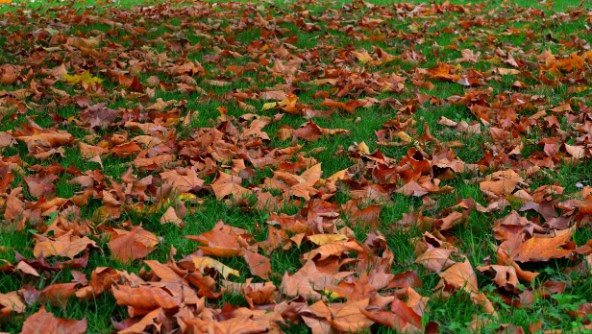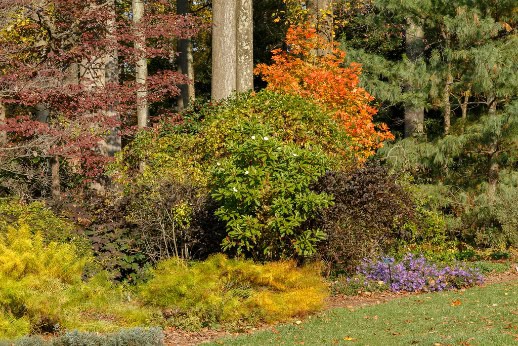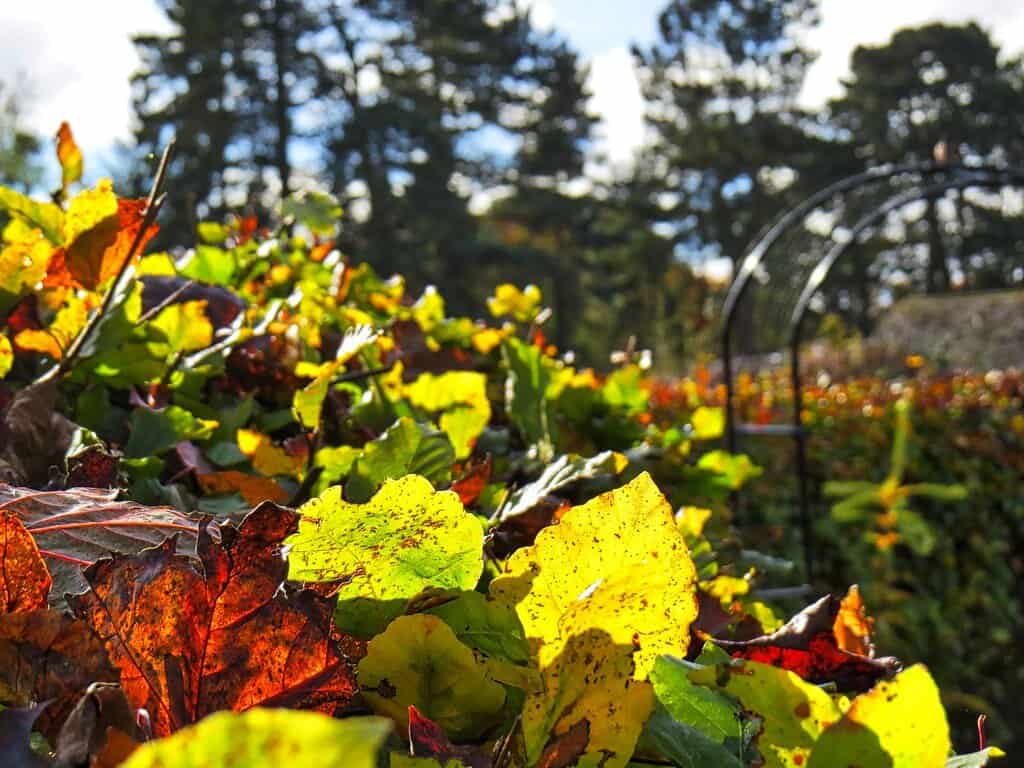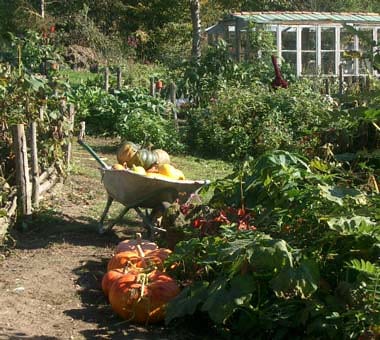Jump to:
Autumn gardening often feels like a long list of chores, but it doesn’t have to be that way. Let’s take it one at a time, and you’ll step into spring with less work waiting for you. If that’s what you need, read on.
Lawn Care and Maintenance in Autumn

(Image Credit: Wikimedia Commons)
As autumn goes on, the days get shorter, the ground turns wetter, and leaves pile up—and your lawn takes the brunt. Use this time to get the lawn in order with these tasks:
- Clear the leaves and don’t let them sit on the grass for weeks. Rake at least every few days, or use a mower with a collection box if the lawn is big.
- Open up the ground by pushing a garden fork into the turf. Alternatively, go for an aerator to let water drain and roots breathe. Heavy rain can turn lawns into soggy patches, so focus on spots where water lingers.
- Thicken thin patches if parts of the lawn look bare. Throw down grass seed while the soil is still warm, and a light rake can help with this. In return, you’ll see better growth now than in early spring.
- Feed the roots using a mix low in nitrogen and higher in potassium or phosphorus. It won’t give a flush of green but will strengthen the roots to handle cold weather.
- Give the lawn a last trim around 4cm. Keep it shorter than in summer, but don’t shave it down to the soil.
Autumn Gardening Plant Care & Borders

By this time, your borders might start looking a bit flat, but a quick tidy can bring them back to life.
- Cut back the perennials. This tidies the border and helps stop pests hiding over winter. You can leave seed heads on a few plants to feed the birds.
- Lift tender plants, such as dahlias, cannas, and begonias. Shake off the soil and let them dry before storing them inside. Use paper or hessian sacks rather than plastic, so they don’t rot.
- Cut long shoots on shrubs and roses. This is to prevent wind-rock and remove any dead or diseased parts. With roses, cut above an outward-facing bud.
- Mulch beds with a layer of compost, leaf mould, or bark. Spread it once the ground is damp, and you’ll lock in moisture over winter. This will feed the soil and protect the roots from frost. Keep mulch off stems and crowns to prevent rot.
- Plant spring bulbs like daffodils, tulips, crocus, and alliums. Get them into the ground while the soil is soft and workable. Tulips are best plants from mid-October to as late as December, but other spring bulbs can be planted earlier. Aim for three times the depth of the bulb and plant in groups for that natural-looking display.
Trees, Hedges, and Shrubs Upkeep in Autumn

Autumn is the best time to plant new trees and hedges. The soil still holds summer warmth, and regular rain keeps it moist. So, if you’ve been thinking about adding a hedge for privacy or planting a young fruit tree, now is the time!
Dig a hole wider than the root ball, break up the soil at the base, and water well once it’s in. Check the stakes and ties while you’re out planting or tidying. Young trees need support in autumn winds, but ties that are too tight can dig into the bark.
Hedges need a last trim before growth slows. Keep the sides and top tidy so they hold their shape through winter, and avoid cutting too deep into old wood. This keeps them neat and less likely to catch the wind. Legal point: you must check for nesting birds before trimming (Wildlife & Countryside Act 1981).
Fruit and Vegetable Garden Jobs for Autumn

Autumn gardening in the veg patch means clearing out what’s past its best. That way, you can make space for winter crops (if you wish). It’s also time to give the soil a boost, along with these chores:
- Harvest remaining crops before frost damages them. This could be the last beans, courgettes, or tomatoes. Don’t leave them to rot on the plants, as that attracts pests and spreads disease.
- Plant garlic and overwintering-variety onions this autumn to take advantage of the warm soil. And they’ll be ready to harvest earlier in the summer!
- Dig over beds for weeds and add compost or well-rotted manure. Doing so improves soil structure and gives nutrients time to break down over winter. Tip: Cover empty beds with cardboard or a tarpaulin to stop weeds from coming back.
- Protect young plants, including leafy greens, with fleece or cloches. Even cut-down plastic bottles for smaller plants will do.
Round-up
These autumn gardening jobs aren’t the whole list, but they give you a solid start. Of course, you’ll have your own list depending on what’s in your garden.
Don’t try to cram it all in at once. Tackle one job, tick it off, then go for the next. Come spring, you’ll be glad you stayed on top of it.
Think you can put in a bit more effort? Here’s what you can add to your checklist: How To Make The Most Of Your Garden In Autumn





